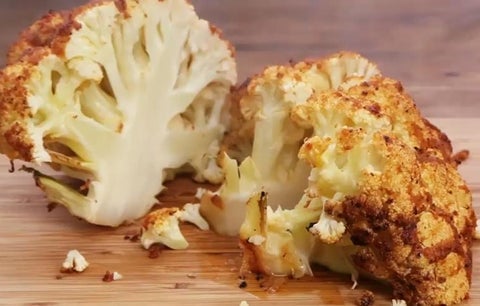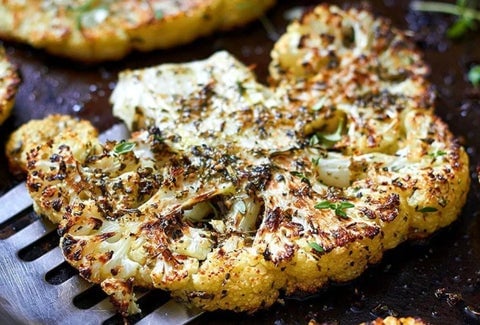How To Cook With Cauliflower
Cauliflower, like many other variants of the Brassica oleracea family (cabbage, kale, sprouts, broccoli etc), has traditionally had a bad rep. Resolutely uncool, it was the type of vegetable that grandparents and particularly stodgy restaurants would serve as a side dish; boiled, uninspiring, insipid. Shunned by young foodies in favour of hipper ingredients and whatever the latest food fad was, sales of cauliflower plunged 35% between 2000 and 2010. Yet today, things couldn’t be more different – cauliflower is finally cool.
A new generation of chefs, food lovers, and Instagram influencers have discovered just how versatile, and delicious, cauliflower can be. The likes of Yotam Ottolenghi and Eyal Shani sung its praises often and vigorously, cooking it in their restaurants and writing about it in their books, while food magazines emblazoned the vegetable across their covers. Elevated to a centrepiece ingredient, it’s cropped up in all sorts of dishes – served with lobster butter, dressed with romesco sauce, baked whole with chicken salt, barbecued and dusted with pine nuts and tahini sauce, deep fried and served with fish, or sautéed with obscene amounts of butter.

At the same time, it can be fashioned into grilled steaks, couscous, the famous cauliflower “rice”, and even “flour” to use in ersatz pizza bases. As a low-carb, wheat-free, low GI, paleo-friendly food, it contains just 23 calories and 4 grams of carbs per 100g (there’s also 2 grams of protein, and 2 grams of dietary fibre). Vegans in particular have embraced its versatility – hence those pizza bases, and the prominence of cauliflower steaks.
The latter – thick slabs that are seasoned and cooked over high heats, giving a contrast between a salty crust and a deliciously creamy, tender curd texture – give the same satisfying, meaty sensation a carnivore gets when they eat a piece of perfectly cooked meat, and have found fame on tables from New York to Sydney.
How best to cook it at home though? Raw, cauliflower is quite nutty, but roast it long enough and it can go very sweet – you'll find it has dark, caramel notes. Slather it in butter, cumin, and sea salt, and roast at a high heat. Alternatively, crumble the florets into a pan with foaming butter and some garlic; just be sure to use plenty of butter - if you’re frugal with it, you won’t get that “meaty” taste.
For the health conscious, steaming is possible. This cooks the cauliflower quickly, gently and without diluting its delicate flavor; it also locks in its many vitamins and nutrients. Steamed cauliflower can also be a starting point for mashing them, making a healthier alternative to traditional mash. Mix through some lemon juice, browned butter, chopped crunchy nuts, grated cheese (hard and salty works best), or anything else your imagination comes up with.

Cauliflower can also be pickled – it’s a key ingredient in the popular sweet-tangy-spicy pickled condiment piccalilli – and deep fried. And, if you want to try and replicate cauliflower steaks at home, it’s really quite simple. Chop a large cauliflower lengthwise into 4 “steaks”, brush with a mix of olive oil, garlic, lemon juice, red pepper flakes, salt and pepper, and roast at 400 degrees F (200 degrees C) for 15 minutes. Flip them over, brush them again, then continue roasting till they’ve turned a wondrous golden brown.
We’ve got some great, USDA certified organic cauliflower available, along with cauliflower rice and a few other cauliflower products. Order some today, and discover just how delicious it can be really be.

